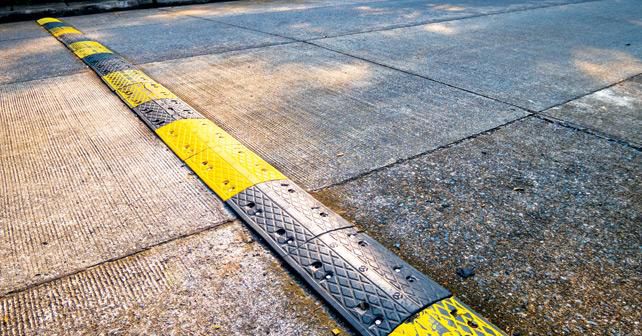
The AAUI President points out that, paradoxically, speed bumps lead to over 10,000 deaths every year on Indian roads.
The reason that speed humps (or speed breakers) are put in place is to slow traffic and keep pedestrians safe. But on Indian roads, these bumps can be very dangerous. In fact, speed bumps are responsible for over 10,000 deaths every year.
Government statistics reveal that 11,084 individuals lost their lives in 2015 due to speed breakers, while the fatality count stood at 11,008 in 2014. Recently, the Automobile Association of Upper India (AAUI) invited comments from motorists on the growing nuisance of speed breakers in the National Capital Region. Almost all motorists today struggle to navigate through streets festooned with road humps, slow points, or other inconsistently implemented traffic management devices. The road humps, meant for slowing vehicles down to safer speeds, have become an integral part of our daily commute. However, they often prove counterproductive, as they’re ineffective as safety mechanisms and do little to facilitate safe traffic flow.
Many motorists have voiced their opinion, and even complained to the area traffic police departments, about speed bumps. Single lane, angled slow points are intensely disliked too. Adding to that, security barriers that are often installed on roads – ostensibly so that traffic slows down to facilitate inspection by the police – also creates additional traffic hazards and blockages. Traffic snarls, caused by slowing traffic, are not only frustrating, they are also a major contributor to air pollution as motorists slow down and speed up between them.
In residential areas, however, there is support for speed breakers – as local residents view these speed bumps as an appropriate mechanism for reducing speeds, and, therefore, saving lives. However, many of these speed breakers are uneven in size and do not conform to the guidelines specified by the Indian Road Congress (IRC).
Thankfully, the Delhi Traffic Police has now ordered removal of all such unauthorised speed breakers. However, with all their good intentions, the police may not be able to resolve the issue unless residents join hands with them. This prompted the AAUI to reach out to its motorist member families and Residents Welfare Associations (RWAs) to identify and provide their feedback relating to speed bumps.
The feedback reveals that neither the local residents nor the traffic police consult them before building speed breakers in their neighbourhoods. Also, many residents construct speed breakers in front of their houses, flouting all guidelines and legal norms.
As per the IRC guidelines, dated June 12, 1987, speed breakers must be placed on minor roads, primarily under the following circumstances: T-intersections of minor roads with rural trunk highways, characterised by relatively low traffic volumes but very high average operation speed and poor sight distances (such locations have a high record of fatal accidents); intersections of minor roads with major roads and mid-block sections in urban areas to bring down speeds; and selected local streets in residential areas, schools, colleges or university campuses, hospitals, etc. Also, where traffic is observed to travel faster than the regulated or safe speed prescribed in the area.
It is of utmost importance, from a safety viewpoint, that the speed breakers are laid strictly in conformity with the specifications recommended by the IRC. Moreover, arrangements for proper drainage of speed breakers must be made to prevent the formation of ponds and puddles. Plus, speed breakers should be painted with alternate black and white bands to give additional visual warning. For better night visibility, it’s desirable that the markings are in luminous paint/luminous strips. Embedded cat-eyes can also be used to enhance night visibility.
I, once again, appeal to all our members and readers to come forward with their opinions and feedback, enabling the AAUI to discuss the same with the concerned civic authorities.
T.K. Malhotra is the President of the Automobile Association of Upper India (AAUI).























Write your Comment